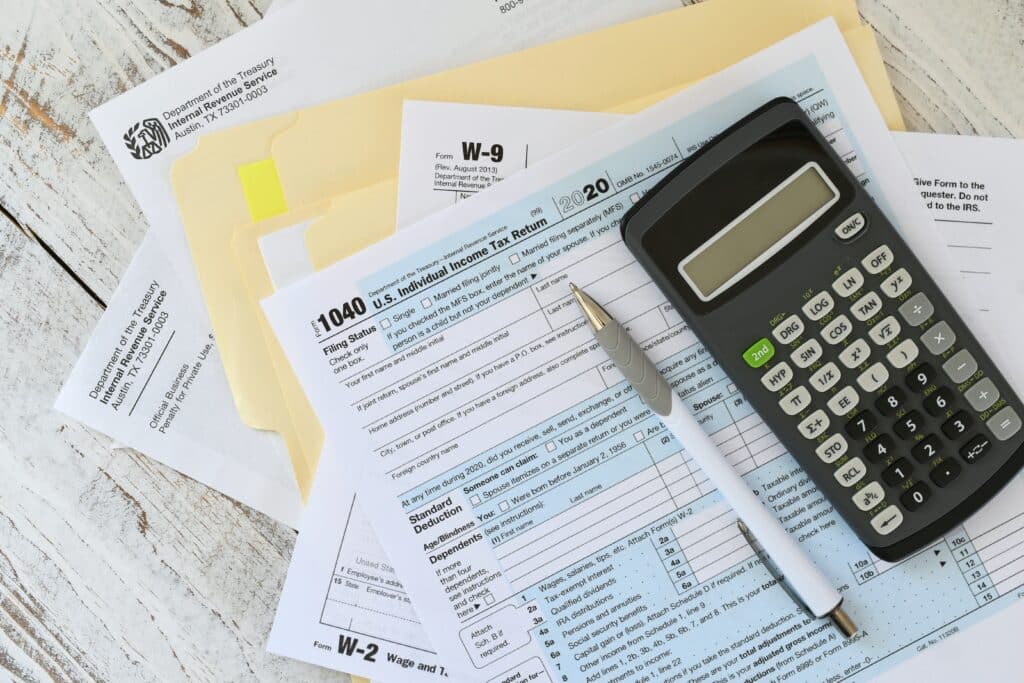Tax season 2024 is just around the corner. If you haven’t started preparing your tax documents, now is the time. Tax season can be a bit overwhelming to some people, but there are a few things you can do to help make it easier for you. One thing that helps lessen the stress is to gather your tax documents as early as possible. And if you’re working with a tax preparer, you’ll be glad you did. Here’s a tax document checklist to help you gather everything you need for a streamlined and stress-free tax season.
When Can I File My Taxes for 2024?
Tax season 2024 runs through Monday, April 15. You can file your taxes anytime between now and then. If you’ve got a complicated situation and need a bit more time, you can file for an extension. If approved, you’ll need to have your returns filed by October 15, 2024. Please note that even if you file for an extension, you will still need to pay your estimated taxes by April 15 to ensure you don’t get penalized.
Tax Document Checklist
Now that you know when you can file your taxes for 2024, it’s time to start gathering your tax documents. Everyone’s financial situation is different, so this tax document checklist is more of a general rule of thumb for most.
Form 1040: US Individual Income Tax Return
This form is the main form used to fill out your income taxes. If you’re a senior citizen, you’ll use Form 1040-SC.
W2: Employment Income
If you are employed, your employer will send you a W-2 form by January 31st for tax filing purposes. This form provides information on your earnings for the previous year.
Form 1098: Mortgage or Student Loan Interest Form
If you own a home or have been paying on any student loans, you’ll receive a 1098 with details of how much interest you’ve paid over the last year.
Form 1099: Additional Income
If you have ever worked as an independent contractor, earned income from any assets, or received any additional income, then you are probably familiar with Form 1099. There are various types of 1099 forms, each for a different kind of income earned. Here’s what you can expect from each type of form:
- 1099-NEC: Use this form if you’ve done any contract work.
- 1099-MISC: Own a rental? Earning royalties? This form is for you.
- 1099-K: If you’ve been paid over $20,000 through a third-party payment application, use this form.
- 1099-INT: Use this for investment earnings.
- 1099-DIV: This form details any dividends paid out.
- 1099-B: If you have a broker managing your funds, use this form.
- 1099-Q: This form is for payments from “Qualified Educational Programs” such as a 529.
Schedule A: This form helps you list out your itemized, individual deductions.
Schedule B: This form is used to calculate interest and dividends received.
Schedule C: If you’re a freelancer, you’ll use this form to list any profits made or lost.
Schedule D: If you’ve sold, traded, or bought property this year, you’ll use this form to report capital gains or losses.
To find out exactly what you need for your specific situation, working with a tax specialist or tax preparer can help. This person can guide you through the process, help you streamline your tax documents, and can help you get the most out of filing your returns. Reach out to a trusted tax professional near you. And if you’re looking for a recommendation, we highly recommend David Sensing with SageSpring Tax. Reach out today and get the confidence you need for a stress-free tax season.
Raymond James and its advisors do not offer tax or legal advice. You should discuss any tax or legal matters with the appropriate professional.

